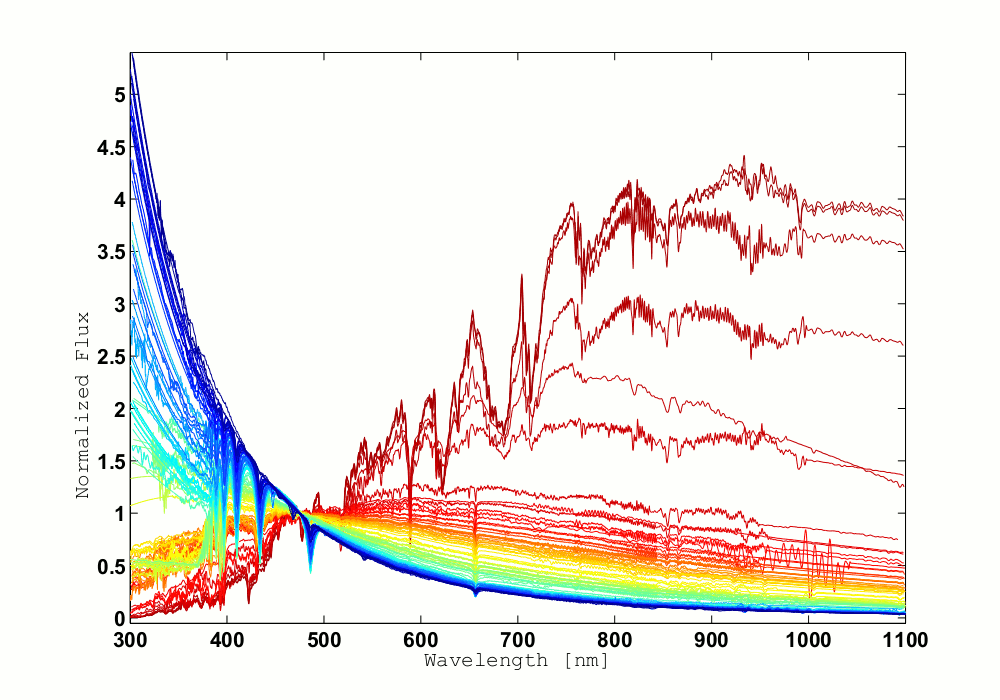5.2.2 Ground-based catalogue for external calibrations
Author(s): Elena Pancino
The external calibration model requires the use of as many calibrators as possible (compatibly with the feasibility of the corresponding on-ground observing campaign), including all spectral types from blue to red (to account for colour dependencies), with smooth spectral energy distribution (SED) but also absorption features, both narrow (atomic lines) and wide (molecular bands). The Gaia end-of-mission requirement for the Spectro-Photometric Standard Star (SPSS) flux precision is 1%, and their flux calibration should be tied to Vega (Bohlin and Gilliland 2004; Bohlin 2007, 2014) to within 3%. This sets an approximate number of required calibrators of around 200, to ensure ground-based observability all year round from the Northern and Southern hemispheres, and with a suitable magnitude range (– mag) to be observed by both Gaia and several 2–4 m class ground-based telescopes with a good signal-to-noise ratio.
Because no existing set of SPSS in the literature simultaneously meets all these requirements, while at the same time covering the whole Gaia spectral range (330–1050 nm), an initial selection of approximately 300 SPSS candidates was made. These candidates cover all spectral types from hot WD and O/B to cold M stars, i.e., with a temperature range – K. A substantial observational effort (Pancino et al. 2012; Altavilla et al. 2015) to collect the required data and to monitor for constancy (Marinoni et al. 2016) started in 2006 and was completed in 2015. The campaign was awarded more than 5000 hours of observing time, mostly in visitor mode, at six different facilities: DOLORES@TNG in La Palma, EFOSC2@NTT and ROSS@REM in La Silla, CAFOS@2.2 m in Calar Alto, BFOSC@Cassini in Loiano, and LaRuca@1.5 m in San Pedro Mártir. Some additional data were also acquired with Meia@TJO in Catalonia. The survey produced more than 100,000 imaging and spectroscopic frames, that are presently being analysed (Altavilla et al. 2015). The raw data, flux tables, and intermediate data products are collected at the ASI Space Science Data Center in a database that will be opened to the public along with the first official release of SPSS flux tables (see below).

Two internal releases of SPSS flux tables were prepared so far, a pre-launch version (V0) to test the instrument performance and the pipelines, and a first post-launch version (V1) to actually calibrate the photometry for Gaia DR1. Both V0 and V1 are stored in MDB and contain the best 93 SPSS, i.e. about 50% of the final sample, observed in strictly photometric conditions and monitored for constancy on timescales of 1–2 hours to exclude stars with magnitude variations larger than 10 mmag. The quality of the flux tables in V1 already meets the formal Gaia requirements (precision 1% and accuracy 3%), and is sufficient to calibrate integrated Gaia magnitudes , , and , and therefore was also used to calibrate Gaia DR2. Future releases will increase the number of validated SPSS up to completion of the entire sample, will improve the data quality of the individual flux tables, and will complete the data products available for each SPSS (including absolute magnitudes). Figure 5.5 shows a one-sight view of the current sample where fluxes are normalized at 475 nm, while the colour ranks with the sources spectral type.
The public release of final SPSS flux tables will occur when the analysis of the whole set is complete.